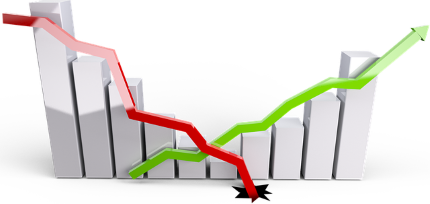Since the pandemic became an official crisis in early 2020, investors have had to deal with crisis after crisis. There does not seem to be a path toward the next bull market for stocks.
I assume we will have another bull market at some point, but the current crisis-to-crisis investment environment makes strategies that rely on capital gains very unreliable.
But there’s one way to make reliable returns even amid all this craziness. And it’s way less stressful, too.
Let me show you…

Here are some of the events that have shaken investors over the last three years:
- The shutdown of large swaths of the economy due to the pandemic
- Massive payments from the government during the pandemic so people could stay home from work
- A stock market bull market powered by companies—many of which were unprofitable even as their sales soared—benefiting from the stay-at-home phenomenon
- The bull market fizzles at the start of 2022, when more than 1,000 of the pandemic darling stocks lose over 70% of their values, with many falling by more than 90%
- Russia’s invasion of Ukraine, and the subsequent sanctions the U.S. and E.U. put on Russia, including cutting off a large portion of Europe’s source of natural gas
- Soaring crude oil and natural gas prices soared, especially in Europe, where inhabitants saw heating and power bills soar by several hundred percent
- “Transitory” inflation that turned persistent at levels not seen for 40 years, leading the Federal Reserve—a bit late to the game—to embark on a path of aggressive interest rate increases to try to get inflation under control
- Ongoing inflation and rising rates crashed bond prices
- The Russia-Ukraine war stretching into its second year
- Venture capital companies hearing a rumor about their favorite bank and telling their client companies to withdraw their cash from Silicon Valley Bank, triggering a bank run and a massive drop in the bank and finance-related stock prices
I am afraid to guess what will happen next month. These crises (some big, some small) are all the result of fast-moving information and slow-moving (or just dumb) bureaucrats.
The strategy used in my Dividend Hunter service provides a more assured way to generate attractive and growing investment results. Throughout the last three years, my Dividend Hunter subscribers have invested for long-term gains and have seen positive results when tracking income.
The Dividend Hunter recommended portfolio has an average yield of about 9%. I don’t recommend trying to time the market or fretting over share price swings. The goal is to buy and accumulate dividend-paying shares, so our income grows quarter after quarter.
If you earn 9% and reinvest all dividends, the income will theoretically compound by 9% per year. In the real world, the compounding actually does even better. You get organic dividend growth, plus the benefit of buying more shares when prices are down and yields up and buying fewer shares with high prices and lower yields.
This is not a get-rich-quick strategy. It’s a building income at an attractive yield and steady rate strategy. And it works through the ups and downs of the markets and the crises of the day.
You can see dramatic results if you regularly add more money into a Dividend Hunter portfolio. My solo 401k is 100% in Dividend Hunter investments. I make monthly contributions to my retirement plan. I use those contributions and the dividends they earn to buy more dividend-paying shares. I track portfolio income by the quarter, and my investment income grows every quarter, to the tune of 25% to 30% per year! I have a very good idea of my potential retirement income for any year I pick in the future.
It takes a dividend mindset to follow the Dividend Hunter strategy. Once a subscriber who follows the strategy gets through a stock market down cycle and recovery, she sees how well it works. I get a lot of thank-yous for sharing the Dividend Hunter way.





